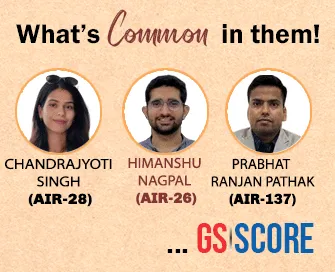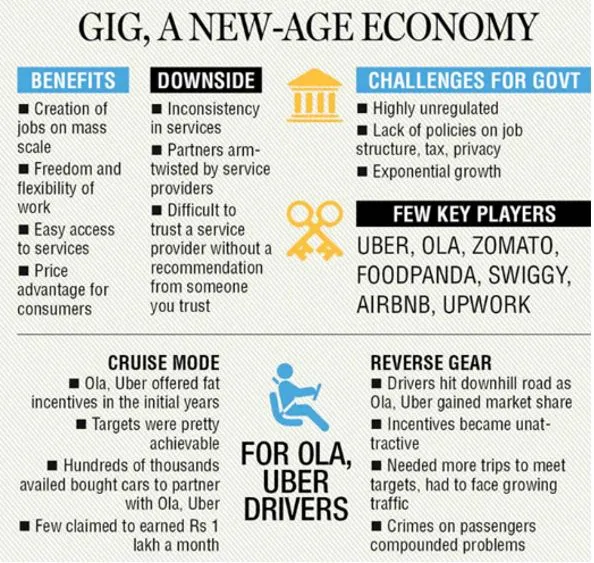

19th April 2025 (11 Topics)
Mains Issues
Context
Recently, reports have suggested that the United States may be willing to recognise Russia’s control over Crimea as part of a broader peace deal with Ukraine. This potential shift is happening amid efforts by US President Donald Trump to negotiate a ceasefire between Russia and Ukraine, which remains one of the most severe armed conflicts in Europe since World War II.
What is Crimea and why is it controversial?
- Crimea is a peninsula that juts into the Black Sea, located in southern Ukraine, and is connected to mainland Ukraine by a narrow strip of land. To the east, it is separated from Russia by the Kerch Strait.
- Area and Capital: Crimea spans 27,000 sq. km (roughly the size of Belgium). Its capital is Simferopol.
- Strategic Bridge: Russia constructed the Kerch Bridge linking Crimea with mainland Russia, but this has sustained war-related damage during the conflict.
- Background:
- Russian Empire Era: Crimea was absorbed into the Russian Empire by Catherine the Great in the 18th century. The naval base at Sevastopol was soon established.
- Crimean War (1853–1856): The war was fought between Russia and the Ottoman Empire (aided by Britain and France); it reshaped European geopolitics and is seen as a precursor to World War I.
- Soviet Period: Crimea became part of the Soviet Union in 1921. In 1954, Nikita Khrushchev (then Soviet Premier and a Ukrainian) transferred Crimea to Soviet Ukraine.
- Post-Soviet Disputes: After the USSR’s collapse in 1991, disputes grew between Russia and Ukraine over Crimea’s status.
- Russian Annexation in 2014: In 2014, after the fall of Ukraine’s pro-Russia President Viktor Yanukovych, Russia invaded Crimea and held a controversial referendum, claiming overwhelming support for joining Russia.
- The annexation was rejected by the United Nations General Assembly, the US, and the EU.
- Sanctions were imposed on Russia.
- The Kremlin maintains that the issue is settled, despite limited international recognition.
- Agriculture and Industry:
- The region is important for crops like wheat, corn, and sunflowers.
- The Kerch region in eastern Crimea has iron ore mining.
- Two grain storage terminals exist — one in Kerch and one in Sevastopol.

What’s Happening Now?
- Amid the ongoing war, which began in February 2022, there is growing diplomatic pressure to find a peace solution.
- The United States has been trying to push for a negotiated ceasefire.
- But the peace talks are progressing slowly, and US officials have expressed frustration, suggesting that Washington may withdraw from mediation if there is no breakthrough soon.
Why this matters?
- International Law at Stake: Recognising Crimea as Russian could legitimise forceful territorial expansion, weakening the global rules-based order.
- US Policy Shift: This move would represent a major shift in US foreign policy and could divide Western allies, many of whom oppose any concession to Russia.
- Geopolitical Precedent: If accepted, this deal may set a dangerous precedent for other countries with territorial ambitions — such as China in the South China Sea or Taiwan.
- Ukraine’s Sovereignty: The proposed compromise undermines Ukraine’s national sovereignty and long-standing aspirations to integrate with NATO and the EU.


Mains Issues
Context
The Karnataka Platform-based Gig Workers (Social Security and Welfare) Bill, 2024 has gained significant attention due to its potential to be a pioneering law for the welfare of platform-based gig workers in India.
Why the Bill Was Needed?
- Gig Economy in Karnataka: Karnataka is home to around 2 lakh platform-based gig workers. They enjoy flexibility in their work but lack formal labor protection, which exposes them to
- National Context: The gig economy is a rapidly growing sector expected to provide 5 million jobs in India by 2030 (NITI Aayog, 2022). However, gig workers remain unprotected by traditional labor laws, leading to multiple instances of worker exploitation.
- Legal Landscape: In 2020, the Central government passed the Code on Social Security (CoSS) to define gig workers, but its implementation is still pending. In 2023, Rajasthan became the first state to introduce a law for gig workers. Karnataka's Bill aims to follow suit, protecting gig workers under a dedicated framework.
What the Bill Seeks to Address?
- Lack of Worker Protection: Gig workers often face arbitrary termination, unsafe working conditions, and lack of basic welfare benefits. The Bill aims to provide social security and welfare to these workers, filling the gap left by the absence of traditional labor laws.
- Welfare Fund Creation: The Bill proposes a welfare fund for gig workers. Platforms (aggregators) will be required to contribute a welfare fee of 1%-5% of each transaction, which will go directly to the welfare fund.

Key Features of the Bill
- Definition of Gig Workers: A gig worker is someone working on a platform-based model where work and payment are based on a contract, with no formal employer-employee relationship.
- The Bill aims to ensure social security benefits for these workers without applying full labor laws.
- Welfare Fund and Fee: A welfare fee (1%-5%) will be deducted from the workers' payments, and this amount will go towards a welfare fund.
- The Gig Workers Welfare Board will manage the fund, oversee worker registration, and implement social security schemes.
- Safety and Work Conditions: Platforms must ensure that workers have a safe work environment with adequate rest facilities. A 14-day notice period is mandated for worker termination unless the worker has caused bodily harm.
- Grievance Redressal:
- A two-tier grievance redressal mechanism will be put in place.
- If the internal dispute committee does not resolve the issue within 14 days, the grievance will be forwarded to the Welfare Board.
- Platform Obligations: Platforms must provide details of all gig workers to the Welfare Board.
- Platforms will also need to implement a Welfare Fee Verification System (WFVS), which will track welfare fee payments.
Fact Box: Who is a Gig Worker?
Government Initiatives for Gig Workers
|
PYQQ. Examine the role of ‘Gig Economy’ in the process of empowerment of women in India. (2021) |


Mains Issues
Context
Rising global temperatures and extreme heat waves are becoming increasingly frequent and intense due to climate change, bringing renewed attention to heat stress in animals.
What is Heat Stress?
- Heat stress happens when an animal is unable to regulate its internal body temperature effectively under high external heat.
- Animals naturally try to cool themselves by sweating, panting, lying in shade, or drinking water.
- But when the heat load from the environment exceeds their cooling capacity, their bodies become overwhelmed.
- This leads to a condition where their cells, organs, and systems start malfunctioning. In the short term, this can cause: Heat exhaustion, Dehydration, Rapid breathing or panting, Loss of appetite, Reduced productivity (like milk yield or weight gain)
- In more serious cases, it can lead to: Organ damage, Fertility problems, Hormonal imbalance or even Death.
How Does Heat Stress Disrupt Animal Hormones?
- Animals survive and function normally because of a finely balanced endocrine (hormonal) system, which regulates metabolism, stress response, reproduction, and more. Heat stress throws this balance off.
- Some major effects observed in animals under heat stress:
- Cortisol & HPA Axis Activation: Cortisol is a key “stress hormone” released by the adrenal glands. In heat stress, the HPA axis (hypothalamus–pituitary–adrenal axis) is constantly activated. This leads to elevated cortisol, which initially helps manage heat but later causes chronic stress, immune suppression, and fatigue.
- Thyroid Hormones (Thyroxine and Triiodothyronine): These control metabolism and body temperature. Under heat stress, levels of these hormones drop, which slows metabolism and reduces energy production. In dairy cows and goats, this results in reduced milk yield, sluggishness, and poor growth.
- Reproductive Hormones (Testosterone, Estradiol, LH, FSH): Heat affects reproductive organs and hormones.
- In males (like rats, pigs), it damages testes, reduces testosterone, and leads to low sperm quality.
- In females (like cows, sows), heat disrupts ovulation and may cause ‘summer infertility’.
- Insulin and Glucose Metabolism: Cows under heat stress show increased insulin, which reflects altered glucose metabolism and may indicate early metabolic disorders.
- Other Stress Hormones (Catecholamines): Hormones like epinephrine and norepinephrine stay elevated, which puts constant pressure on the heart and blood vessels, risking long-term damage.
Why this matters in India (Basic Animal Husbandry Statistics 2024)?
- India has a large livestock population (especially dairy cattle, goats, and poultry), many of which live in hot and humid
- India’s milk productionhas increased by 78% to reach 239.30 million tonnes in 2023-24. Alongside milk, there has been an increase in meat and egg production as well. While milk growth has slowed in recent years.
- India continues to be the world’s largest producerof milk.
- Milk Production:
- Milk productionin India grew by 78%, reaching 30 million tonnes in 2023-24.
- Despite this increase, growth has slowed compared to previous years (5.77% in 2021-22 and 3.83% in 2022-23).
- India remains the world’s largest producer of milk, but officials stress the need to boost dairy exports.
- Milk production from exotic/crossbred cattleincreased by 8%, while indigenous cattle saw a larger growth of 76%.
- However, milk production from buffaloesdropped by 16% in the same period.
- Meat Production: Meat productiongrew by 95% and is estimated to reach 25 million tonnes in 2023-24. India has been experiencing growth in its meat production, contributing to its position as a significant player in global markets.
- Egg Production: Egg productionincreased by 17%, reaching 77 billion eggs in 2023-24. India remains the world’s second-largest producer of eggs, with an average of 103 eggs per person annually.
- Wool Production: India’s total wool productionstands at 69 million kg.


Mains Issues
Context
The Shanghai Cooperation Organisation (SCO) defence ministers’ meeting couldn’t issue a joint communique on 26th June after India refused to endorse the document because it didn’t address its terrorism-related concerns.
More about the news:
- The defence minister attended the meeting at Qingdao in China, refused to sign the joint communique as it was silent on the April 22 Pahalgam terror attack.
- The communique, however, mentioned Balochistan and the hijacking of the Jaffer Express by Baloch militants.
- Pakistan’s insistence on not having any reference to the Pahalgam attack, while retaining the reference to the situation in Balochistan, stymied the finalisation of a joint statement.
- The SCO works by consensus, and a joint communique cannot be issued if even one member state doesn’t endorse it.
- China, the current president of the SCO, has deep military and strategic ties with Pakistan, which it strongly supported during the recent four-day clashes with India under Operation Sindoor.
India’s Call for Unified Action Against Terrorism
- In his address at the SCO summit, the defence minister urged member states to unite against terrorism in all its forms, emphasising that perpetrators, organisers, financiers, and sponsors of terrorism must be held accountable.
- He stressed that peace and prosperity cannot coexist with terrorism or the proliferation of weapons of mass destruction in the hands of non-state actors.
- His call for decisive action underscored the need for SCO members to align in strengthening regional stability and security.
Role of Regional Anti-Terrorist Structure (RATS) in Countering Radicalisation:
- Coordination and information sharing: RATS serves as a platform for SCO member states to share intelligence on terrorist activities and radicalisation trends.
- Countering Extremist Propaganda: It has been recognised for its work in the cyber domain, particularly in preventing the spread of extremist propaganda online.
- Policy and Strategy Development: RATS facilitates the adoption of anti-terror measures, such as the SCO Council’s joint statement on “Countering Radicalisation Leading to Terrorism.”
- Capacity Building and Training: RATS conducts joint training programs and exercises to enhance the capabilities of law enforcement and security agencies in SCO member states.
Challenges faced by SCO:
- Diverse Interests and Geopolitical Rivalries: The SCO comprises countries with differing political systems, economic priorities, and strategic goals, such as China, Russia, India, and Pakistan. Conflicting interests, like the India-Pakistan rivalry, hinder cohesive decision-making.
- Counterterrorism and radicalisation challenges: The SCO’s Regional Anti-Terrorist Structure (RATS) faces difficulties in addressing evolving terrorist tactics, including online radicalisation and cross-border extremism.
- Uneven Economic Capacities: Member states have different economic strengths, with China dominating trade and investment initiatives. Smaller economies like Kyrgyzstan and Tajikistan struggle to benefit equally.
- Sanctions and Global Dynamics: Sanctions on Russia and concerns over China’s global influence affect the SCO’s ability to engage with international financial systems and attract investment.
- Regional Instability: Central Asian member states face internal challenges like political instability, corruption, and ethnic tensions, which undermine SCO initiatives.
|
Shanghai Cooperation Organisation (SCO)
|
|
UPSC PYQ ‘Virus of Conflict is affecting the functioning of the SCO’ In light of the above statement, point out the role of India in mitigating the problems. (2023) |


Prelims Articles
Context
Karnataka is set to become India’s first state to complete a village-level survey of antiquities, as announced during the World Heritage Day.
About Heritage Survey
- Karnataka has launched a village-level antiquities survey across the state. It is a first-of-its-kind survey.
- This is being done by the Department of Archaeology, Museums and Heritage
- The aim is to document all antiquities in villages — including:
- Inscriptions
- Sculptures
- Monuments
- Karnataka has completed the documentation in 119 taluks, aiming to cover the rest by end of FY 2024–25.
- Every antiquity is being geo-tagged, which will create a spatial database for better protection and policy planning.
- Once completed, it will serve as a template for other states to digitally preserve and manage their heritage.
- Scope of Karnataka’s Monuments: The state has:
- Over 800 monuments protected by the State Government
- More than 600 protected by the Archaeological Survey of India (ASI)
Key-Initiatives to protect Heritage Sites
|


Prelims Articles
Context
For Indian investors eyeing opportunities beyond domestic borders, a sophisticated investment route is worth a closer look—UCITS, or Undertakings for Collective Investment in Transferable Securities.
About
- The Undertakings for the Collective Investment in Transferable Securities (UCITS) is the European Commission's regulatory framework for managing and selling mutual funds.
- UCITS funds can be registered and sold in any country in the European Union using unified regulatory and investor protection requirements.
- A UCITS is similar to a mutual fund. They are registered in countries that belong to the European Union and regulated by the member states where they are registered.
- With built-in tax advantages and seamless global access, they offer a compelling alterative to direct US holdings.
- They offer a tax-efficient, transparent and liquid pathway to global markets.
Fact Box: Mutual Funds
UCITS vs Indian Mutual Funds: Key Differences
|


Prelims Articles
Context
A recent move by the Odisha government to allot 100 acres of land for a private hotel project near the Similipal Tiger Reserve has triggered strong opposition from local citizen groups and tribal communities. The land, located just 700 metres from the reserve’s boundary in Laxmiposi village (Mayurbhanj district), lies within the Eco-Sensitive Zone (ESZ) of Similipal.
Concerns
- Ecological Sensitivity: The proposed land lies within the Eco-Sensitive Zone (ESZ) of Similipal Tiger Reserve. The area is a wildlife corridor, frequently visited by wild animals from the reserve.
- Tribal livelihood: Similipal’s indigenous tribes — such as the Ho, Santhal, and Munda — rely on the forest for food, firewood, and medicinal plants. The area includes sacred groves, which are worshipped by the tribal communities and considered part of their customary religious practices.
- Environmental Impact: Clearing this land for tourism infrastructure may lead to deforestation, soil erosion, groundwater depletion, and fragmentation of wildlife habitats.
|
Similipal Tiger Reserve
|


Prelims Articles
Context
India rejected the supplemental award by the Court of Arbitration on Kishenganga and Ratle hydroelectric projects, saying that it “never recognised” the Court of Arbitration, which is a “serious breach” of the Indus Waters Treaty, which has been put “at abeyance” after the April 22 terror attack in Pahalgam.
Recent Dispute: Kishenganga and Ratle Hydropower Projects
- These Projects are located in Jammu and Kashmir, on tributaries of the Jhelum and Chenab rivers (Western rivers).
- Pakistan raised objections to the design and technical aspects of these projects, alleging violations of the Indus Water treaty provisions.
- Pakistan approached the World Bank to establish a Court of Arbitration to resolve these technical disputes.
- India’s position:
- India’s stance regarding this Court of Arbitration was that it was a “unilateral action” by Pakistan to approach the World Bank.
- India has never recognised the legitimacy of the Court of Arbitration, calling it an “illegal” body.
- The MEA reminded that after the Pahalgam terror attack, India has exercised “its rights as a sovereign nation under international law” and placed the Indus Waters Treaty in abeyance.
|
Indus Waters Treaty (IWT):
|


Editorials
Context
The Supreme Court of India delivered a landmark judgment in The State of Tamil Nadu vs The Governor of Tamil Nadu and Anr., declaring the Governor’s inaction on 10 Bills and subsequent referral to the President as unconstitutional. The Court invoked Article 142 to deem the Bills assented and prescribed time limits for action on State Bills under Articles 200 and 201, reinforcing federalism and legislative supremacy.
Interpretation of Constitutional Provisions:
- Article 200 Clarified – No Absolute Veto: The Governor cannot withhold assent indefinitely or use a ‘pocket veto’; he must either assent, withhold with reasons, or send the Bill for reconsideration — which must be returned to him with or without amendments.
- Withholding Assent is Not Final – Article 200 Proviso: The Court reiterated from State of Punjab vs Principal Secretary to the Governor (2023) that withholding assent must be followed by sending the Bill back to the legislature, keeping the legislative process alive.
- Governor Bound by Council of Ministers – No Discretion: The Governor must act on the aid and advice of the Council of Ministers while deciding on assent, including when to propose reconsideration or reserve a Bill for the President.
Judicial Enforcement of Federalism:
- Invocation of Article 142 – Judicial Remedy: The Court used its special powers to declare the 10 Tamil Nadu Bills as deemed assented, marking an unprecedented judicial remedy to a constitutional deadlock.
- Fixed Time Limits – Reasonable Period Doctrine: Time limits of 1 to 3 months were prescribed for Governors and the President to act on State Bills, based on the principle that executive power must be exercised within a reasonable time.
- Judicial Review Applicable – No Immunity: The Court clarified that the functions of Governors and the President under Articles 200 and 201 are not beyond judicial review, reinforcing accountability of constitutional heads.
Constitutional Challenges and Implications:
- Inconsistency in Governor's Discretion – Unresolved Area: The Court’s stance that Governors act only on advice faces difficulty when suggesting amendments to a legislature controlled by the same Council — creating a logical gap.
- Debate on Judicial Overreach – Kerala Governor’s Objection: Critics, including the Kerala Governor, accused the Court of usurping legislative powers by effectively amending constitutional practice through judicial directions.
- Need for Constitutional Amendment – Structural Reform: The judgment exposes lacunae in Articles 200 and 201 and revives the long-standing demand for amending provisions to prevent constitutional paralysis and ensure federal balance.
Practice Question
Q. Discuss the constitutional implications of the Supreme Court’s 2025 judgment in the Tamil Nadu Governor case with respect to the role of Governors under Article 200. How does the judgment contribute to restoring the balance in India’s federal structure?


Editorials
Context
The Supreme Court set aside the Delhi High Court’s order directing Wikipedia to take down a page allegedly defamatory to the Asian News International (ANI). The Court found the order excessively broad and contrary to established principles of safe harbour for online intermediaries.
Supreme Court’s Intervention and Legal Clarity:
- Quashing of Arbitrary Takedown Order – Judicial Correction: The Supreme Court struck down the Delhi HC’s takedown directive, terming it overly vague and wide-ranging, and asked ANI to re-approach the High Court with clearly specified defamatory content.
- Overreach in Interpretation – Definitional Error: The HC wrongly classified referenced articles as editorials or opinion pieces despite them being based on investigative reporting; the SC disagreed with this classification and the imposed higher responsibility on Wikipedia.
- Upholding Safe Harbour – Platform Protection: The SC indirectly reaffirmed Section 79 of the IT Act, recognizing Wikipedia as an intermediary not directly responsible for user-generated content unless specifically flagged and unaddressed.
Wikipedia’s Model and Functional Safeguards:
- Community-Driven Platform – Editorial Independence: Wikipedia’s content is curated by global volunteers, not controlled by Wikimedia Foundation, and governed by transparent editorial norms including community consensus and page protections.
- Content Moderation Mechanism – Internal Governance: Disputes are handled through measures like "extended confirmed protection" and "full protection", ensuring only experienced or elected users can edit contentious pages.
- Repository of Knowledge – Global Reach: With over 62.95 million articles in 350+ languages, Wikipedia serves as a vital source of information; suppressing it through judicial overreach risks undermining public access to diverse knowledge.
Constitutional and Free Speech Implications:
- Defamation vs Public Interest – Need for Nuance: Broad takedown based on alleged defamation may suppress content that serves public interest or critical discourse, blurring the line between misinformation and accountability journalism.
- Threat to Digital Freedom – Precedent Risk: Allowing blanket takedowns threatens the editorial freedom of open platforms and may lead to a chilling effect, deterring legitimate critique and investigative content.
- Balancing Fundamental Rights – Court’s Role: The Supreme Court’s order upholds the constitutional value of free speech and information under Article 19(1)(a), emphasizing that judicial directions must be precise and not suppress open discourse.
Practice Question
Q. Discuss the constitutional and technological implications of the Supreme Court's 2025 judgment on Wikipedia in the context of intermediary liability and freedom of expression. How does the judgment reconcile judicial oversight with digital free speech?


Editorials
India’s logistics sector, one of the most carbon-intensive globally, is now undergoing a critical transformation to align with India’s Net Zero 2070 target. With the logistics sector contributing 13.5% of India’s total GHG emissions, the focus is on green mobility, modal shift, and clean energy adoption to ensure environmental sustainability alongside economic growth.
Carbon Intensity and Sectoral Dependence
- Road Emission Burden: Road transport accounts for over 88% of emissions from India’s logistics sector, with trucks alone contributing 38% of total CO? emissions, as per IEA (2023).
- Warehousing Carbon Load: The warehousing sector is a major emitter due to high energy consumption in lighting, temperature control, and material handling.
- Air Transport Challenge: Domestic aviation contributes around 4% to logistics emissions but is hardest to decarbonise due to its dependency on refined fossil fuels.
Green Shifts and Government Interventions
- Modal Shift to Railways: Rail freight, being electrified and low-emission, is being promoted with India aiming to follow China’s model, where rail carries nearly 50% of freight.
- Electric Highways Initiative: India has launched a pilot project with overhead electric lines for trucks on the Delhi–Jaipur corridor, to enable zero-emission freight mobility.
- Maritime Decarbonisation Scope: India aims to reduce coastal shipping emissions by using LNG, biofuels, electric and solar-powered vessels, in line with IMO’s 2050 decarbonisation target.
Transitioning Logistics Infrastructure
- Renewable Warehousing Push: Warehousing emissions can be reduced by shifting to solar, wind, and geothermal power, ensuring low-carbon storage infrastructure.
- Inland Waterways Expansion: Government policy targets tripling inland cargo and increasing coastal freight 1.2 times by 2030, to make logistics efficient and emission-light.
- Competitive Green Logistics: Decarbonisation will not only cut emissions but will also enhance the competitiveness and scalability of India’s logistics network in global trade.
Practice Question:
Q. India’s logistics sector is a key determinant of both economic growth and environmental sustainability. Critically examine the strategies required for its decarbonisation, with reference to global best practices and India’s infrastructure roadmap.





